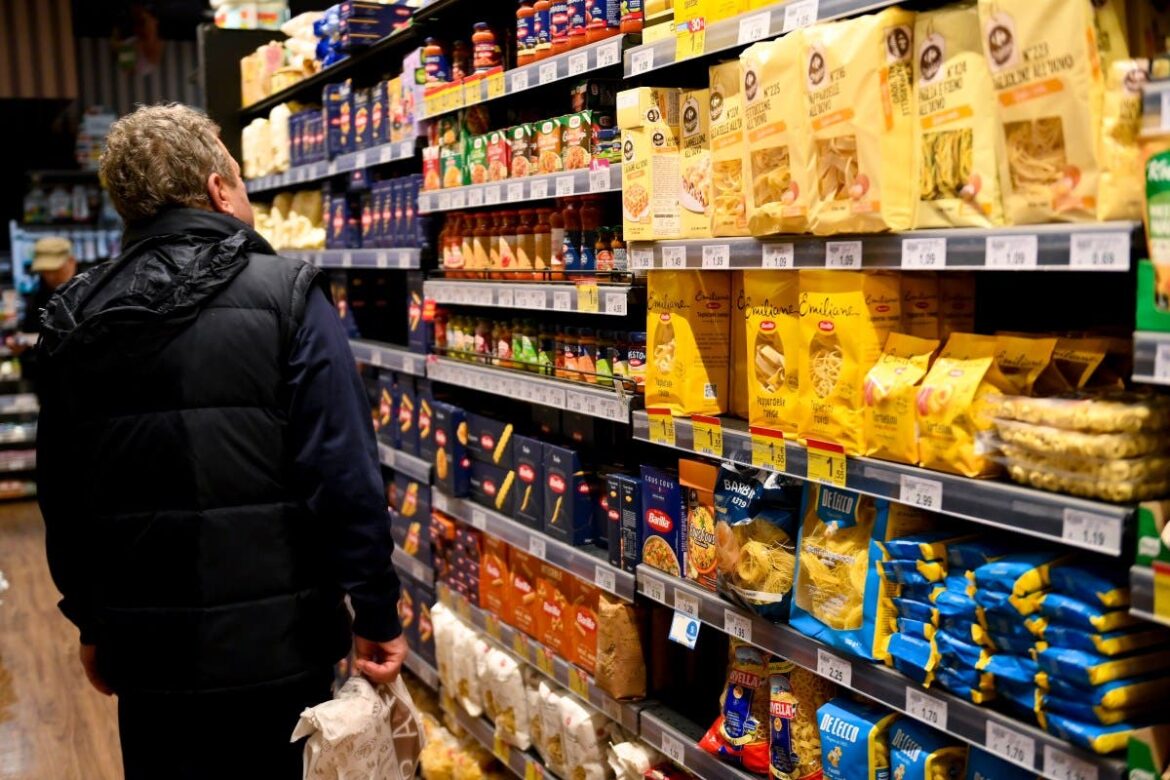Several popular imported pasta brands could vanish from American grocery shelves if the proposed tariffs introduced by President Donald Trump take effect, according to multiple media outlets.
The U.S. government’s proposed 107% total tariff on imported Italian pasta could lead to dramatic shifts in American consumer prices—and potentially leave store shelves devoid of some of the most iconic brands.
If implemented, this would be the highest tariff ever levied on a food import from Italy, threatening the diversity, affordability, and availability of authentic Italian pasta for American shoppers.
Newsweek reached out to the Department of Commerce by email for comment Monday night.
Why It Matters
Italian pasta imports have long been a staple on American grocery shelves, representing both a key culinary link and a major trade relationship between the United States and Italy.
This escalation follows an anti-dumping probe by the Department of Commerce into whether Italian pasta producers are exporting at rates that undercut U.S. companies.
Industry groups warn this move could double pasta prices and prompt affected companies to pull their products from U.S. markets, reshaping the options available for millions of American households who consume imported pasta each year.
The potential trade rift also signals wider tensions in U.S.–EU relations over food imports and international commerce.
 What To Know
What To Know
The U.S. Department of Commerce launched an anti-dumping investigation into Italian pasta in August 2024 after complaints from two American manufacturers, 8th Avenue Food & Provisions and Winland Foods, over alleged unfair pricing from Italian exporters.
In its September 2025 preliminary findings, the Commerce Department proposed a 91.74% anti-dumping tariff on 13 major Italian pasta producers, adding to an existing 15% baseline tariff on European Union goods.
The total tariff could rise to 107%. Officials stated that La Molisana and Pasta Garofalo failed to provide requested information and were deemed uncooperative, prompting a uniform tariff on all 13 companies.
Both Italian brands denied wrongdoing and argued the process was mishandled, The New York Post reported.
If these tariffs go into effect as scheduled in January 2026, American importers and retailers may face steep cost increases.
For consumers, this could mean substantially higher prices at checkout—or, in some cases, the disappearance of imported Italian pasta altogether.
Rummo USA’s chief commercial officer, Jim Donnelly, said the company would refuse to pass the full costs onto customers, warning a price jump from $3.99 to $7.99 per package if forced, according to the report from The New York Post.
The 13 affected Italian brands listed in U.S. Commerce Department records and cited by several media reports include:
La MolisanaPasta GarofaloRummoAgritaliaAldinoAntiche Tradizioni Di GragnanoBarilla (noting U.S.-produced Barilla will be less affected)Gruppo MiloPastificio Artigiano Cav. Giuseppe CoccoPastificio ChiavennaPastificio LiguoriPastificio SgambaroPastificio Tamma
Italy accounts for more than $700 million in annual pasta exports to the United States, with Italian imports comprising the largest share of foreign-made pasta on U.S. retail shelves.
Barilla, which manufactures some of its U.S. market products domestically, is less at risk than brands exclusively exporting from Italy, Il Sole 24 Ore reported.
The proposed U.S. tariffs have triggered strong reactions from European and Italian government officials.
The European Union’s trade commissioner, Maroš Šefčovič, criticized the U.S. investigation and signaled the possibility of a World Trade Organization dispute.
Italy’s Foreign Minister and agricultural organizations such as Coldiretti have called the tariffs a “mortal blow for Made in Italy,” warning of major impacts on food exports and consumer prices, according to the report from Il Sole 24 Ore.
What People Are Saying
Jim Donnelly, chief commercial officer, Rummo USA, told the New York Post: “This will be devastating to all the Italian pasta companies, not just Rummo.… We will not pull the products from the shelf. We will absorb this until this bad ‘cookie cutter judgment’ is fixed. We are confident that the government will see this is a big mistake. We are being penalized because of two other pasta companies’ failure to supply timely and accurate info.”
Francesco Lollobrigida, Italy’s Minister of Agriculture, told Il Sole 24 Ore: “Together with the Italian ambassador to the United States, Marco Peronaci, we are carefully following the alleged anti-dumping action, which would trigger a hyper-protectionist mechanism towards our pasta producers for which we see neither the need nor any justification.”
The U.S. White House official statement to the New York Post: “The Italian companies had multiple opportunities to provide the requested information before they were hit with the high tariff rate. The companies should focus on complying with the investigation instead of complaining to Fake News reporters.”
Unione Italiana Food, Italian pasta industry group, wrote in a statement published by Il Sole 24 Ore, Oct. 2025: “The 91.74% tariffs are an insult to the Made in Italy product par excellence, a sign that this is a political decision not a technical one.… It was the harshest ever seen.”
What Happens Next
The Commerce Department is scheduled to finalize its anti-dumping review within 120 days of its September 4, 2025, preliminary finding, making a late December 2025 or January 2026 decision likely unless the deadline is extended.
If the tariffs are upheld, the new rates would take effect at the start of January 2026. Major Italian producers are urging the U.S. government to revise or reduce the tariff before it takes effect. Meanwhile, Italian and European Union officials are considering formal trade complaints and possible recourse with the World Trade Organization.
Retailers and food importers are bracing for possible supply disruptions, higher prices, or removal of imported products from store shelves should the tariffs hold.


Dining and Cooking